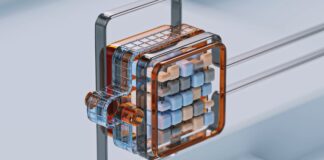High Voltage Direct Current (HVDC) technology is a crucial component of modern power systems, enabling efficient long-distance transmission of electricity over vast distances with minimal losses. HVDC systems utilize direct current (DC) rather than alternating current (AC) for the transmission of electrical power, offering several advantages in terms of efficiency, reliability, and flexibility. HVDC has become increasingly prevalent in recent years, playing a significant role in connecting remote renewable energy resources to urban centers, interconnecting regional power grids, and facilitating cross-border electricity trade. This comprehensive guide will delve into the intricacies of HVDC technology, exploring its principles, applications, benefits, challenges, and future trends.
HVDC technology operates by converting alternating current (AC) generated by power plants into direct current (DC) for transmission over long distances via dedicated HVDC transmission lines. At the receiving end, the DC power is converted back into AC for distribution to consumers. This conversion process involves the use of specialized HVDC converter stations equipped with high-power electronic devices such as thyristors or insulated gate bipolar transistors (IGBTs). HVDC systems offer several advantages over traditional AC transmission systems, including lower transmission losses, increased transmission capacity, improved voltage control, and enhanced grid stability.
The utilization of HVDC technology has witnessed significant growth in recent years due to its ability to address key challenges in modern power systems. One of the primary drivers of HVDC adoption is the increasing integration of renewable energy sources, such as wind and solar, into the power grid. These renewable resources are often located in remote areas with abundant natural resources but limited grid infrastructure, necessitating long-distance transmission to population centers. HVDC facilitates the efficient transmission of renewable energy over long distances, reducing curtailment and maximizing the utilization of renewable resources.
HVDC technology also plays a crucial role in interconnecting regional power grids and facilitating cross-border electricity trade. By linking disparate power systems, HVDC interconnections enable the sharing of resources, balancing of supply and demand, and optimization of grid operation across geopolitical boundaries. HVDC interconnectors enhance grid reliability, resilience, and flexibility, allowing utilities to respond dynamically to fluctuations in demand, generation, and market conditions. Moreover, HVDC facilitates the integration of asynchronous AC grids, enabling the transfer of power between grids operating at different frequencies or phases.
The deployment of HVDC systems presents several technical and operational challenges that must be addressed to maximize their effectiveness and reliability. One significant challenge is the complexity of HVDC converter stations, which require sophisticated control and protection systems to ensure safe and stable operation. Additionally, HVDC systems involve high initial capital costs and long lead times for planning, permitting, and construction, making them financially challenging to implement. Furthermore, the integration of HVDC into existing AC grids requires careful coordination and synchronization to maintain system stability and reliability.
Despite these challenges, the future of HVDC technology appears promising, driven by ongoing advancements in converter technology, control systems, and grid integration techniques. New developments in power electronics, such as voltage-source converters (VSCs) and modular multilevel converters (MMC), promise to enhance the efficiency, flexibility, and reliability of HVDC systems. Moreover, innovations in digitalization, cybersecurity, and grid optimization are expected to further improve the performance and resilience of HVDC infrastructure.
HVDC technology represents a critical enabler of the transition to a more sustainable, resilient, and interconnected energy future. By facilitating the efficient transmission of renewable energy, interconnecting regional power grids, and enhancing grid flexibility, HVDC systems play a pivotal role in addressing the challenges of modern power systems. While HVDC deployment entails technical, financial, and operational complexities, ongoing innovations and advancements promise to unlock new opportunities for harnessing the full potential of HVDC technology in shaping the future of energy transmission and distribution.
HVDC technology continues to evolve rapidly, driven by the increasing demand for reliable, efficient, and sustainable energy transmission solutions. One area of ongoing innovation is the development of multi-terminal HVDC (MTDC) systems, which enable the simultaneous connection of multiple AC grids or renewable energy sources to a common DC transmission network. MTDC systems offer greater flexibility and resilience compared to conventional point-to-point HVDC links, allowing for more efficient grid operation and improved integration of renewable energy resources. Additionally, advancements in HVDC grid control and optimization algorithms are enabling the development of smart grid solutions that enhance grid stability, reliability, and resilience in the face of evolving energy landscapes and climate challenges.
Another emerging trend in HVDC technology is the deployment of HVDC transmission cables for subsea and underground applications. Subsea HVDC cables are used to connect offshore wind farms and remote energy resources to onshore grids, enabling the exploitation of untapped renewable energy potential in offshore locations. Similarly, underground HVDC cables are employed for urban and suburban transmission projects where traditional overhead lines are not feasible due to space constraints or environmental considerations. These HVDC cable technologies offer reliable, high-capacity transmission solutions while minimizing visual and environmental impacts, making them well-suited for modern energy infrastructure projects.
Grid modernization initiatives and energy transition policies worldwide are driving increased investment in HVDC infrastructure as governments and utilities seek to decarbonize energy systems and enhance grid flexibility and reliability. In addition to traditional HVDC transmission projects, there is growing interest in innovative applications such as HVDC-based grid-forming systems and HVDC-connected energy storage solutions. These developments reflect a broader shift towards more decentralized, resilient, and adaptive energy systems that leverage HVDC technology to integrate renewable energy, optimize grid operation, and empower consumers to participate actively in the energy transition.
As the energy landscape continues to evolve, HVDC technology is expected to play an increasingly prominent role in enabling the transition to a more sustainable and resilient energy future. By leveraging the inherent advantages of direct current transmission, such as lower losses, increased controllability, and enhanced grid stability, HVDC systems offer a versatile and scalable solution for addressing the complex challenges of modern energy systems. Moreover, ongoing advancements in HVDC technology, coupled with supportive policies and regulatory frameworks, are poised to accelerate the adoption of HVDC infrastructure and drive further innovation in energy transmission and distribution.
In conclusion, HVDC technology represents a cornerstone of modern energy infrastructure, offering efficient, reliable, and sustainable solutions for transmitting electricity over long distances, interconnecting regional grids, and integrating renewable energy resources. As the global energy transition gathers pace, HVDC systems will continue to play a vital role in enabling the transition to a more decentralized, resilient, and low-carbon energy future. By embracing innovation, collaboration, and strategic investments in HVDC infrastructure, governments, utilities, and industry stakeholders can unlock new opportunities for advancing the goals of energy security, sustainability, and economic prosperity in the 21st century.














